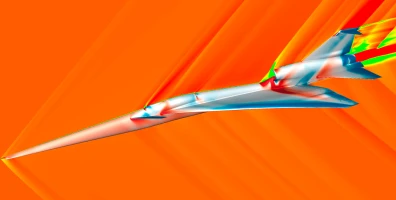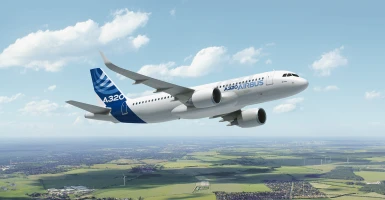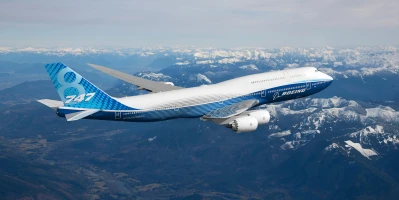aviation
Dawn of a new supersonic era
Humans broke the sound barrier for the first time in 1947. The Concorde was retired in 2003—but supersonic passenger flights could return as soon as 2030.
author: Andreas Spaeth | 4 mins reading time updated on: 30.04.2025
author:
Andreas Spaeth
has been traveling the world as a freelance aviation journalist for over 25 years, visiting and writing about airlines and airports. He is frequently invited to appear on radio and TV programs to discuss current events in the sector.
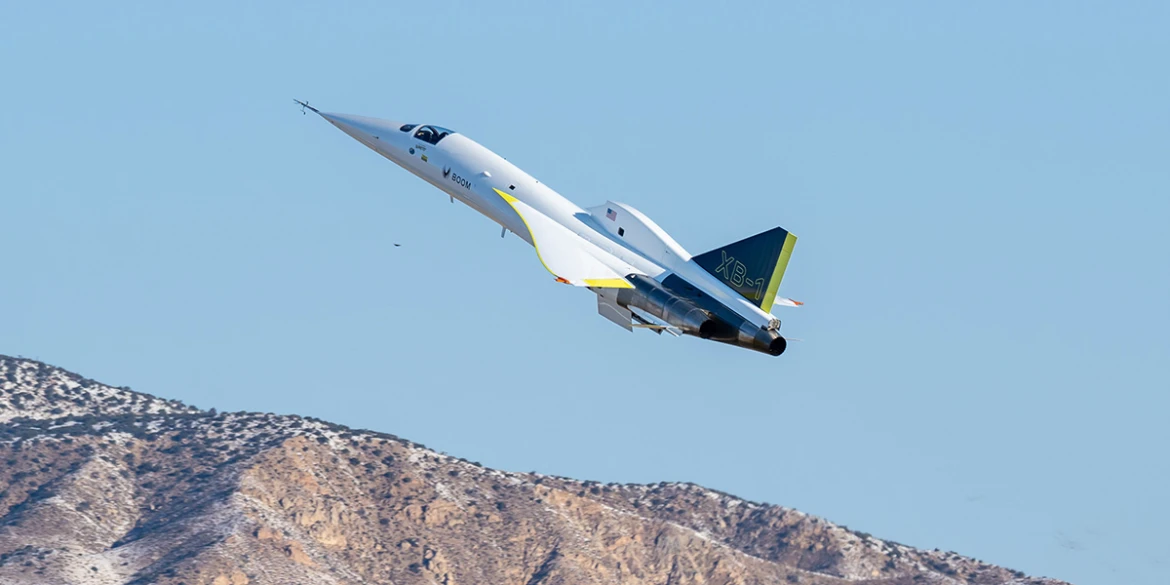
The supersonic corridor over California’s Mojave Desert is considered sacred airspace for flights that break the sound barrier. A small sensation occurred here on January 28, 2025: with a special permit from the FAA, a supersonic flight took place over land—something that is generally banned. On the day in question, the Boom XB-1 single-seater test aircraft managed to break the sound barrier several times, reaching a top speed of Mach 1.18.
These flights were intended to provide data and validate the design of the 80-seater Overture passenger jet, which the U.S. company Boom Supersonic wants to fly for the first time in 2029, ushering in a new supersonic era in the 2030s. The XB-1’s test flights were also intended to prove that the physical principle known as Mach cutoff is more than just a theory. If a supersonic flight adheres to various parameters precisely, Mach cutoff ought to prevent an audible sonic boom from reaching the ground. This proved to be the case—and could make supersonic flights over land possible in the future. That means Boom has already reached milestones that haven’t been seen in commercial supersonic flight for many decades.
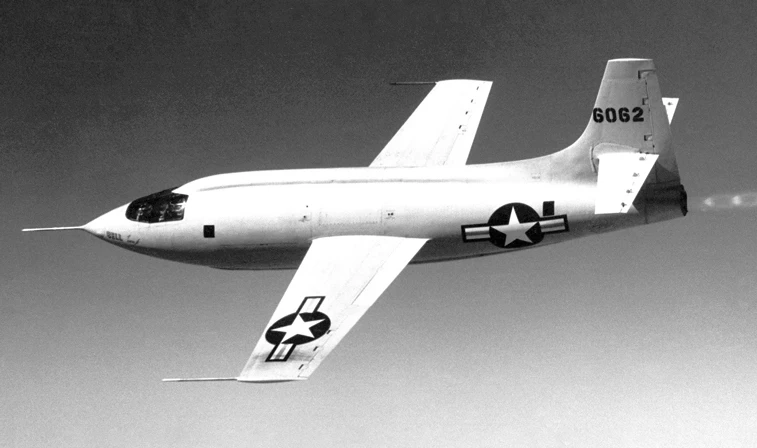

©NASA


©NASA
Yeager’s pioneering flight: On October 14, 1947, Chuck Yeager reached Mach 1.06 in the rocket-powered Bell X-1, breaking the sound barrier in level flight for the first time in history.


©Airbus Heritage


©Airbus Heritage
Franco-British collaboration: The Concorde took to the air for the first time in 1969. Here it is in Toulouse for an engine test.

©NASA
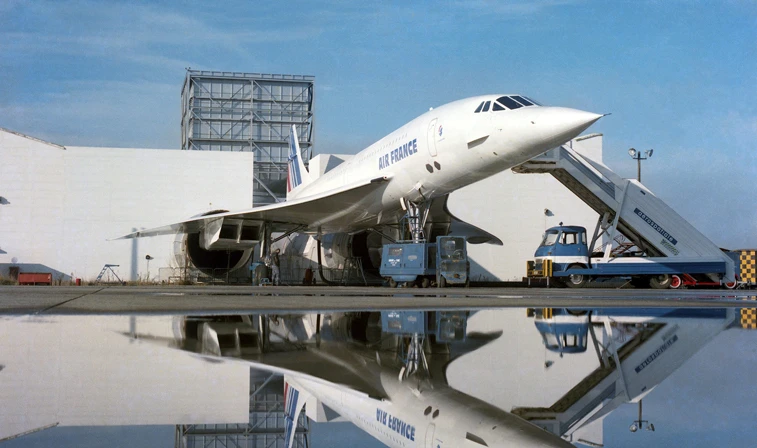
©Airbus Heritage
Even the name XB-1 is reminiscent of history’s first confirmed supersonic flight. This was achieved on October 14, 1947, by the then 24-year-old American Air Force pilot Charles Elwood “Chuck” Yeager. German pilots had probably already broken the sound barrier several times in April 1945 with the Messerschmitt Me-262, the world’s first production jet aircraft. Yeager was in a Bell X-1, -a single-seat rocket-powered plane specifically designed to break the sound barrier for the first time in level flight, not in a dive as had been done before.
Measuring less than ten meters long, the aircraft was painted a striking orange to be more visible in the air or, in the worst-case scenario, on the ground after an accident. It was simple in design and didn’t even have an ejection seat—unthinkable in military testing today. The X-1 was mounted under the fuselage of a Boeing B-29, which carried it to an altitude of around 6,000 meters from the Muroc test site in California’s Mojave Desert. This site was renamed Edwards Air Force Base in 1950. Up in the air, the test pilot clambered into the rocket plane through the empty bomb bay of the B-29. After the X-1 disengaged, it flew on at a safe distance. Then Yeager ignited the four-chamber rocket motor, which was based on German rocket technology.
The X-1 quickly climbed to an altitude of 12,800 meters. Its fuselage was patterned after a standard bullet—a projectile that had proven to be particularly stable at supersonic speeds. But this shape is rather ill-suited to the aerodynamics of ordinary aircraft. At cruising altitude, Yeager accelerated the aircraft to Mach 1.06, which is equivalent to 1,079 kilometers per hour. Observers on the ground heard a dull double bang—a sound that would recur from then on whenever the sound barrier was broken over Edwards: the sonic boom that is still unavoidable today. Just 14 minutes after disengaging and making his historic flight, Yeager landed the X-1—without power, but with success—back at Muroc.
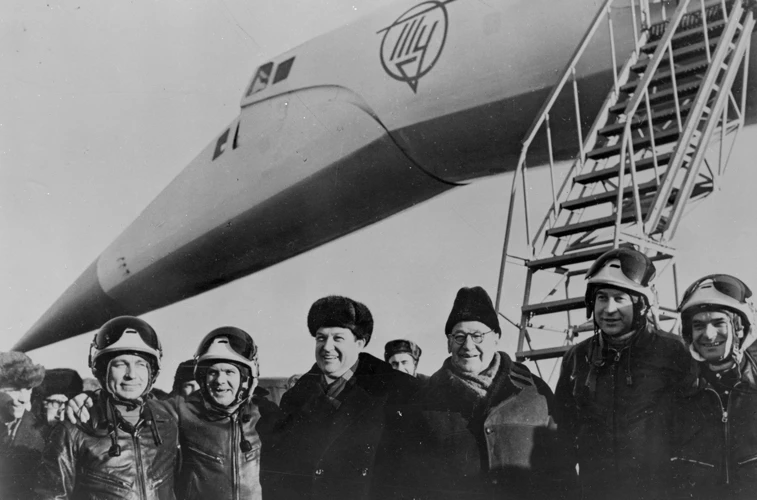

©Tupolev PJSC


©Tupolev PJSC
First supersonic passenger flight: Beaming faces after the maiden flight of the Tu 144 at Zhukovsky on December 31, 1968.
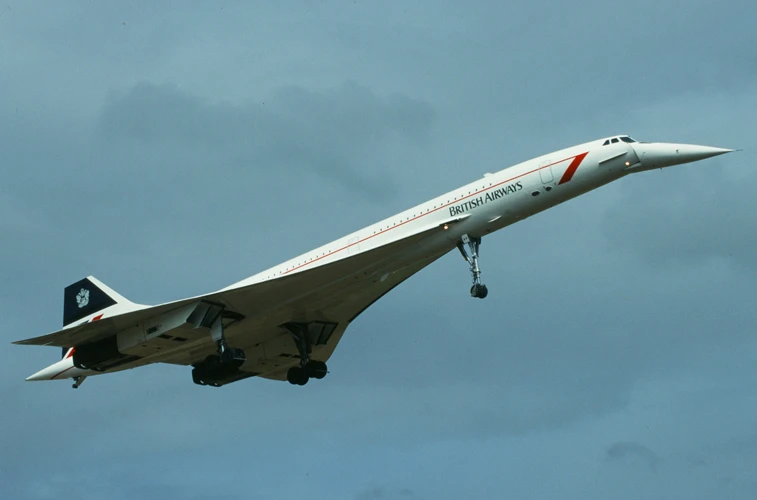

©Andreas Spaeth


©Andreas Spaeth
“Queen of the skies”: A British Airways Concorde on approach to Barbados.

©Tupolev PJSC
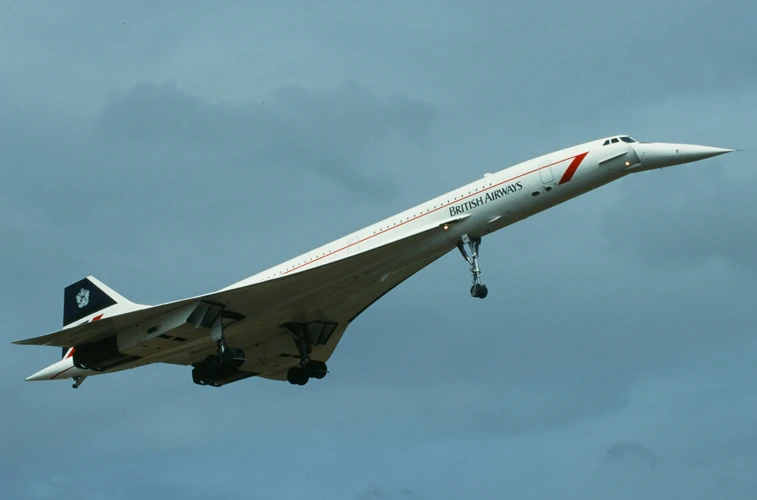
©Andreas Spaeth
A victory for the Soviet Union: The Tupolev Tu-144
In its earliest decades, supersonic flight was exclusively military in nature. But as the 1960s drew to a close, the race was on between East and West to see who would get the first supersonic passenger plane into the air. This accolade went to the Soviet Union when, on December 31, 1968, the Tupolev Tu-144 took off on its maiden flight. It was a world sensation: the elegant aircraft with white delta wings could carry as many as 140 passengers and reach speeds of up to Mach 1.88. While its counterpart in the West, the Franco-British Concorde, wouldn’t take off until March 2, 1969, it could fly at Mach 2.02—twice the speed of sound. At that time, the aviation industry assumed that all longer passenger flights would soon be carried out by supersonic jets. The Boeing 747, which was developed in parallel, was intended more for cargo. A future full of supersonic dreams seemed within reach.
But things turned out differently: the 1973 oil crisis made kerosene extremely expensive, and concerns grew about engine noise and sonic booms. The Tupolev Tu-144 performed only pro forma “regular” flights through the end of 1978. Although the Concorde was an economic failure, between 1976 and 2003 it proved to be a popular means of transportation for business executives and celebrities in a hurry. This was especially true on the busy routes from Paris or London to New York, which it could complete in just about three hours. But with round-trip ticket prices of around 7,000 euros in today’s currency, this remained a pleasure for an exclusive group.
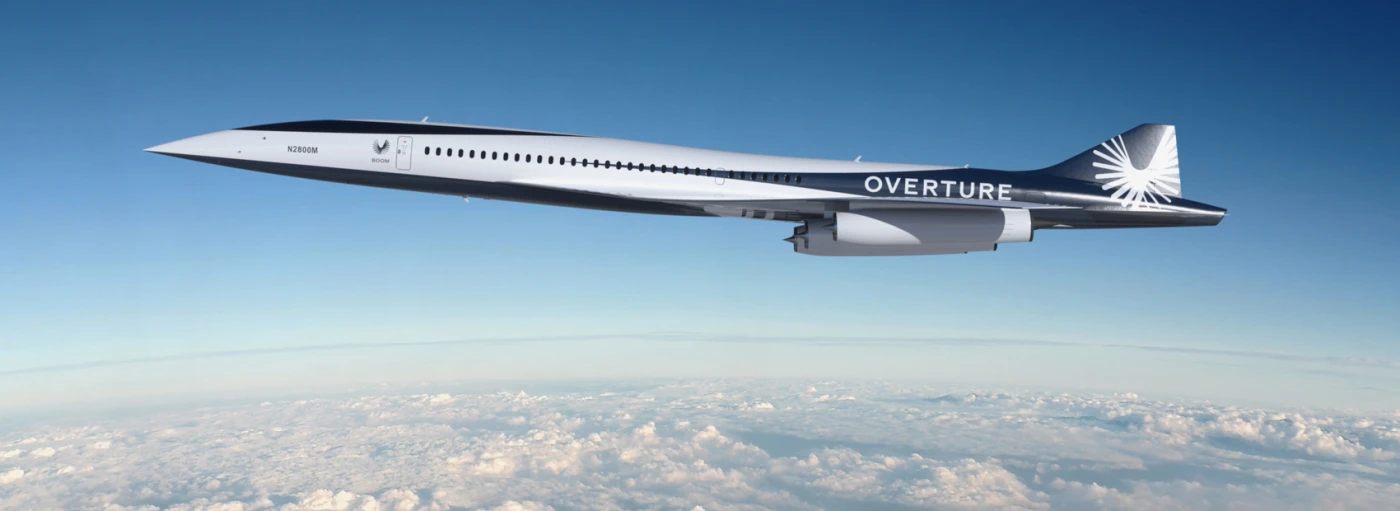
©2022 Boom Supersonic
©2022 Boom Supersonic
Overture: Boom Supersonic’s new supersonic aircraft currently exists only as a concept. It is scheduled to take off for the first time in or around 2030.
60 years after the Concorde’s maiden flight—a new supersonic era?
Some 20 years after the Concorde was retired, Boom Supersonic is now venturing into the next supersonic era with the Overture. Debuting 60 years after the Concorde’s maiden flight, it is expected to carry between 65 and 80 passengers and reach Mach 1.7 over water. For flights over land, Boom plans to stay just below the sound barrier at Mach 0.94.
If the overland ban were to be lifted, the Overture could achieve speeds of up to Mach 1.3 in “Boomless Cruise” with no noise pollution on the ground. In its X-59 QueSST project (see interview "Research on how to achieve a quieter sonic boom"), NASA is also currently researching shapes for supersonic aircraft designs that should reduce the boom enough to permit overland flights. Three major carriers—Japan Airlines, United Airlines, and American Airlines—have preordered a total of 132 Overture jets.
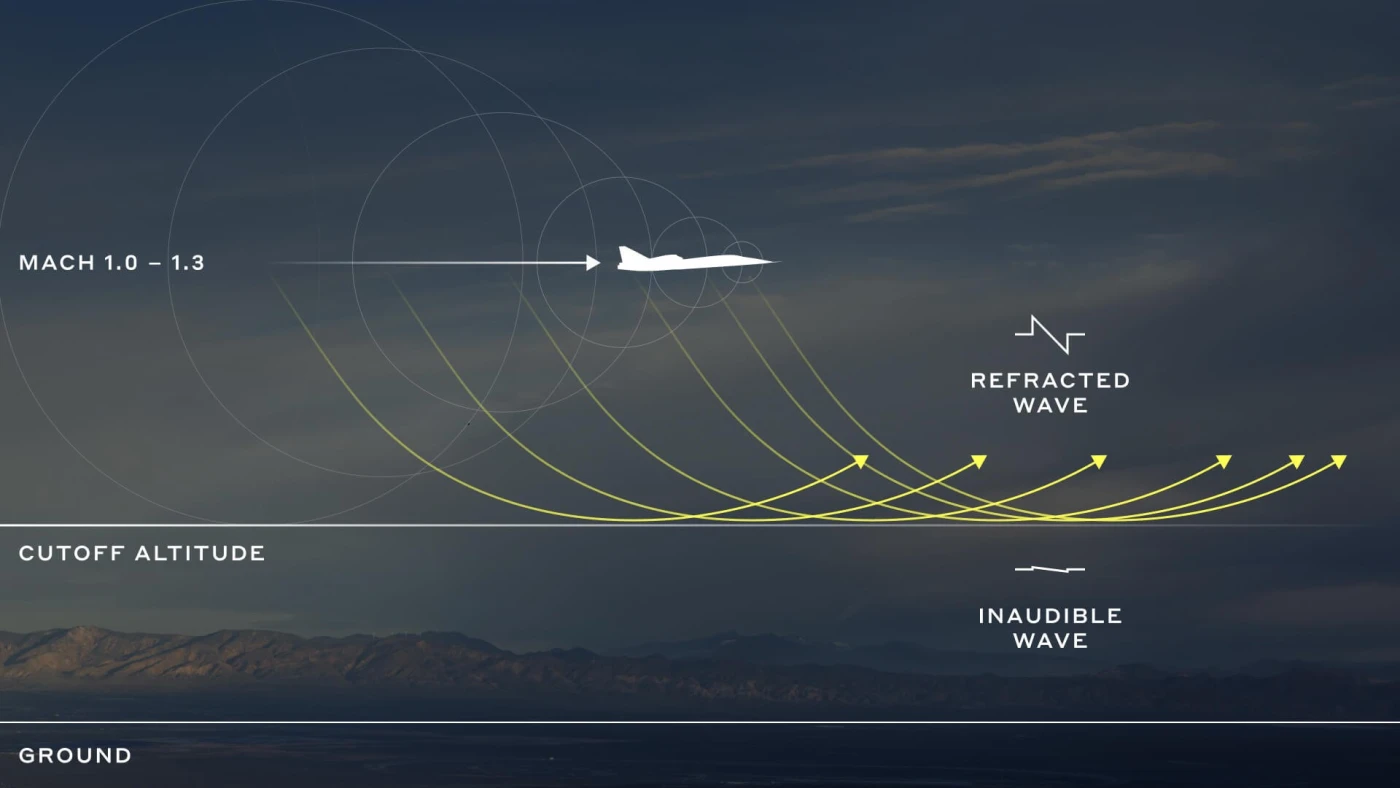
©Pennsylvania State University Acoustical Model of Mach cutoff Flight
©Pennsylvania State University Acoustical Model of Mach cutoff Flight
Mach cutoff is a physical phenomenon that causes sound waves to refract and bend back up into the atmosphere on a U-shaped trajectory away from the ground. This means a supersonic aircraft emitting sound waves in flight that would normally be audible as a boom on the ground can pass overhead without any noticeable effect for humans. To do this, the aircraft must adapt precisely to the prevailing conditions of the area it is overflying. The key factors here are the atmosphere and the nature of the terrain. The aircraft’s cruising speed must be constantly adjusted so that the sonic boom waves don’t extend below a certain height—the cutoff altitude.
Supersonic flight in the 2030s is expected to have far less impact on the environment than the Concorde did. For example, the Overture engineers are aiming to reduce the noise of both the takeoff and the sonic boom—each of these is to be lower than the Concorde’s values by a factor of 30. At the same time, the plan is for the engines to run exclusively on Sustainable Aviation Fuels (SAFs). The whole thing is calculated such that a ticket should cost no more than a trip today on the same route in business class. After 75 years, the stage is set for a new era of supersonic travel.
The magic number of the speed of sound
A flight speed higher than the propagation of sound waves eludes the usual measurement, especially as there is no fixed value in kilometers per hour (km/h) above which we can speak of supersonic speed. In the physics of flight, therefore, the decision was made to go dimensionless at an early stage and the speed of sound was named after its Austrian discoverer, physicist Ernst Mach (1838–1916). Since then, the unit for the speed of sound has been simply “Mach 1”; everything above that is moving at supersonic speed. Aircraft are designed for Mach values, not for specific km/h numbers. Commercial aircraft today typically achieve about Mach 0.82 to 0.87 when cruising. In the Airbus A380, Mach 0.85 corresponds to exactly 903 km/h at a cruising altitude of 11,000 meters; however, at sea level, this speed of sound would be much higher in km/h. But in these lower layers of air, the atmosphere is much denser and thus the air resistance is much greater, meaning that no passenger aircraft there could fly so fast.
How close aircraft come to the sound barrier is determined by external factors at the location in question—namely, the ratio of the specific heat, the specific gas constant and the thermodynamic temperature of the air. With dry air and a temperature of 15 °C, the speed of sound is 1,225 km/h. Above an altitude of 11,000 meters, however, and due to the cold temperatures that prevail there, it is only 1,062 km/h at minus 56 °C.




